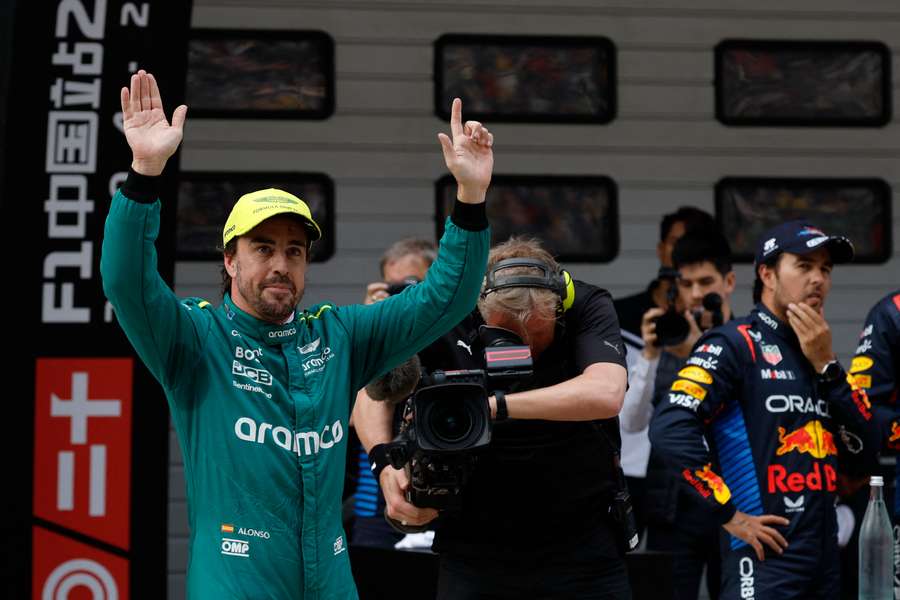Aston Martin's Chinese GP qualifying protest thrown out by stewards after Sainz shunt

Sainz brought out red flags in the second phase when he ran wide and spun across the track, brushing the tyre wall, at the final corner. But after stopping for a minute and 17 seconds, he returned to the pits for new tyres and front wing and completed qualifying when the track was re-opened.
The Spaniard will start seventh on the grid.
Aston Martin, who had Fernando Alonso (42) qualify third for Sunday's race but teammate Lance Stroll (24) 11th, had protested an alleged breach of article 39.6 of Formula One's sporting regulations. Stroll would have made the top 10 had Sainz not continued.
The article states that "any driver whose car stops on the track during the qualifying session or the sprint qualifying session shootout will not be permitted to take any further part in that session."
The stewards ruled that past practice was for a car to be allowed to restart and continue so long as the driver received no outside assistance.
"It is clear that the plain language of Art. 39.6 suggests that so long as a car 'stops' on the track during a qualifying session, that car should not be permitted to take further part in the session," the stewards said.
"However, it was clear from the examples cited by a number of the team managers present and the (governing) FIA, that this was not how this rule was applied by the teams and the FIA in the past.
"The FIA team explained that so long as the car was able to restart and continue from a stopped position within a reasonable time, that would ordinarily be permitted."
The stewards said a typical time allowed would be 30 seconds.
"Absent clear guidance in the regulations or an agreed, established practice of when too long was too long, we considered that this was a discretion best left to Race Control," the stewards said.
They cited examples from past races in Canada, Monaco and Azerbaijan where cars had been reported as 'stopped' but subsequently allowed to continue without complaint.
